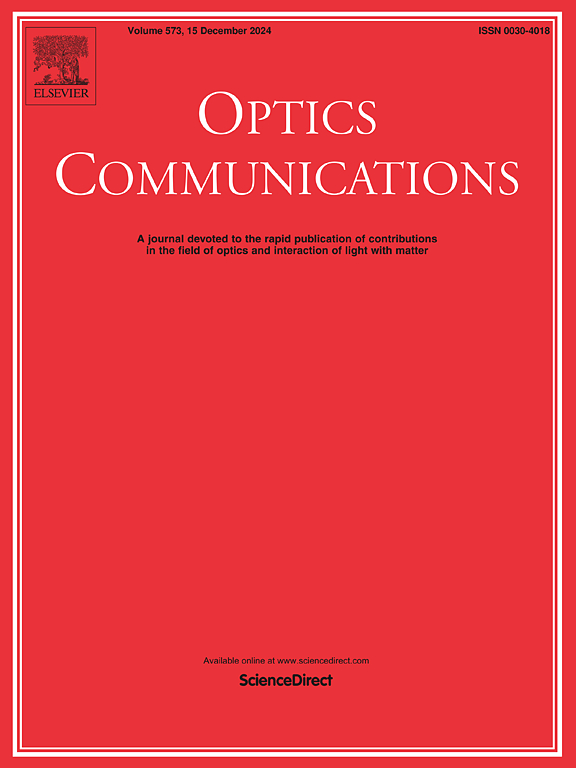Vortex modulation for spatial separation of coherent and incoherent light in lidar-based underwater detection technology
IF 2.5
3区 物理与天体物理
Q2 OPTICS
引用次数: 0
Abstract
We developed the prototype of a vortex lidar system that incorporates a vortex beam generator and a spatial filter in the signal receiver unit. The design and optimization of the key parameters of the prototype were determined through preliminary experiments and the signal-to-noise ratio algorithm. Coherent light and incoherent light can be spatially separated by using vortex modulation and spatial filtering. Both vortex lidar and reference lidar were tested in experiments in which a water tank was used for signal detection. Experimental results show that the return signals acquired with such a vortex lidar from a hard target are weaker in intensity compared to the reference signal (single scattered light + multiple scattered light + background light). Nevertheless, this vortex lidar technique allows for an improved differentiation of the vortex signal (single-scattered light) from background light and multiple-scattered light. The attenuation length (AL), defined as the distance where light intensity decreases to 1/e of its initial value, is used to quantify the target detection range. The maximum detection range for a hard target increases from 10 AL (for the reference lidar) to 14 AL (for the vortex lidar). Furthermore, the target signal intensity measured by the vortex lidar decreases exponentially (according to the Beer–Lambert law) with the distance between the instrument and the underwater target. This result indicates that the vortex signal is dominated by single scattering.
基于激光雷达的水下探测技术中相干与非相干光空间分离的涡旋调制
我们开发了涡流激光雷达系统的原型,该系统在信号接收单元中集成了涡流光束发生器和空间滤波器。通过初步实验和信噪比算法确定了样机关键参数的设计与优化。利用涡旋调制和空间滤波技术可以实现相干光和非相干光的空间分离。涡流激光雷达和参考激光雷达在水箱中进行了信号检测实验。实验结果表明,与参考信号(单散射光+多散射光+背景光)相比,该涡旋激光雷达从硬目标获取的回波信号强度较弱。然而,这种涡旋激光雷达技术允许从背景光和多重散射光中更好地区分涡旋信号(单散射光)。衰减长度(AL)定义为光强衰减到其初始值1/e的距离,用来量化目标的探测距离。对硬目标的最大探测距离从10al(参考激光雷达)增加到14al(涡旋激光雷达)。此外,旋涡激光雷达测量的目标信号强度随仪器与水下目标的距离呈指数递减(根据比尔-朗伯定律)。这表明涡旋信号以单次散射为主。
本文章由计算机程序翻译,如有差异,请以英文原文为准。
求助全文
约1分钟内获得全文
求助全文
来源期刊

Optics Communications
物理-光学
CiteScore
5.10
自引率
8.30%
发文量
681
审稿时长
38 days
期刊介绍:
Optics Communications invites original and timely contributions containing new results in various fields of optics and photonics. The journal considers theoretical and experimental research in areas ranging from the fundamental properties of light to technological applications. Topics covered include classical and quantum optics, optical physics and light-matter interactions, lasers, imaging, guided-wave optics and optical information processing. Manuscripts should offer clear evidence of novelty and significance. Papers concentrating on mathematical and computational issues, with limited connection to optics, are not suitable for publication in the Journal. Similarly, small technical advances, or papers concerned only with engineering applications or issues of materials science fall outside the journal scope.
 求助内容:
求助内容: 应助结果提醒方式:
应助结果提醒方式:


